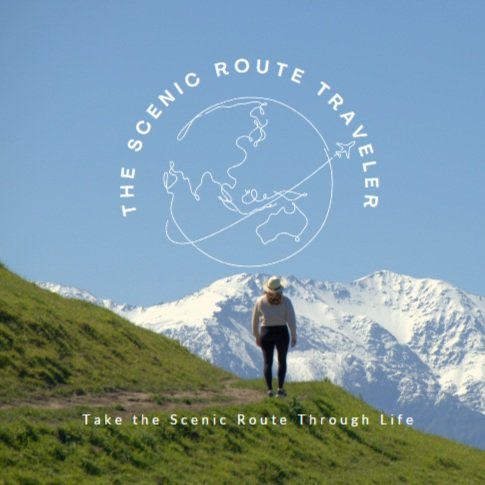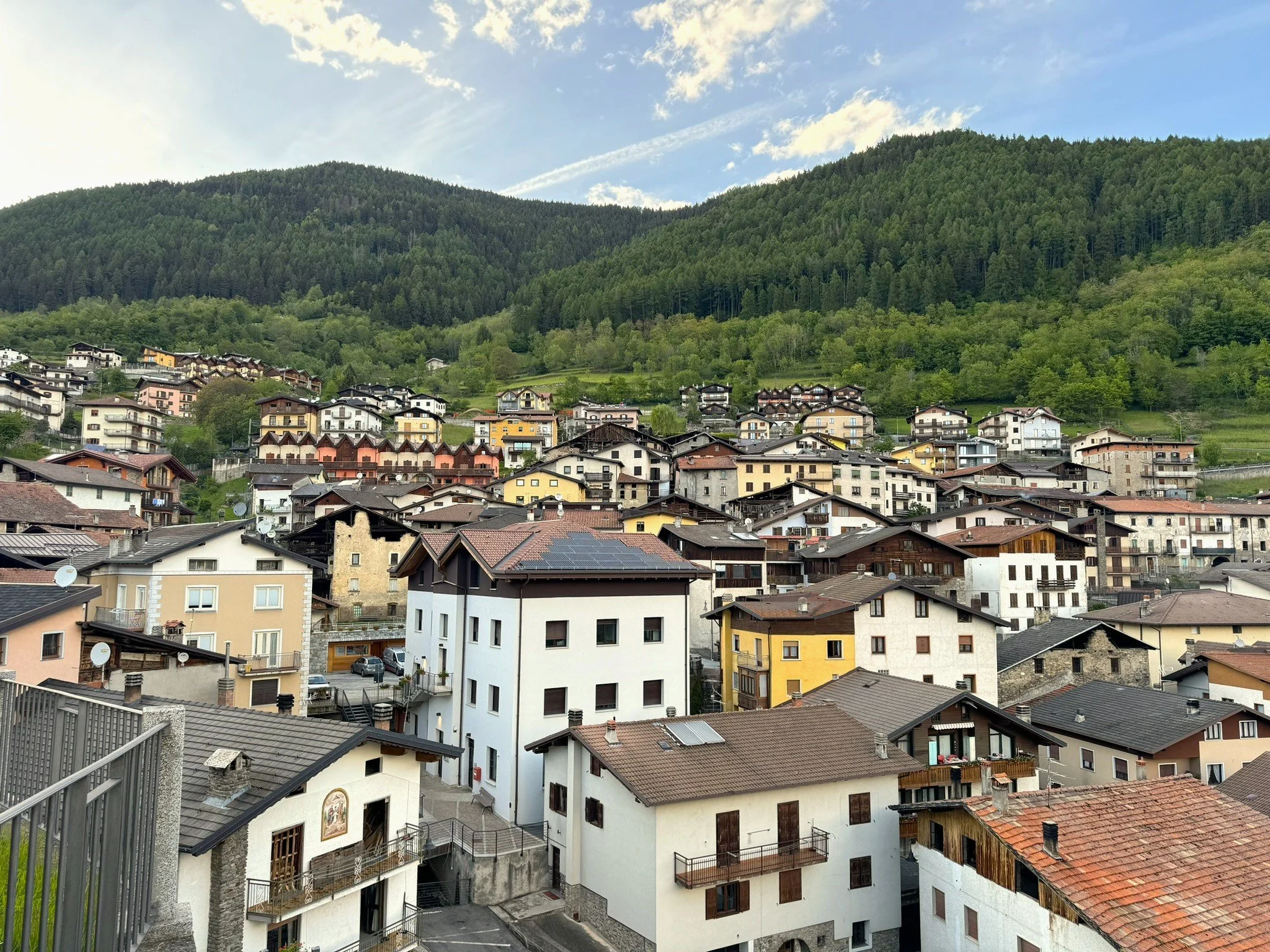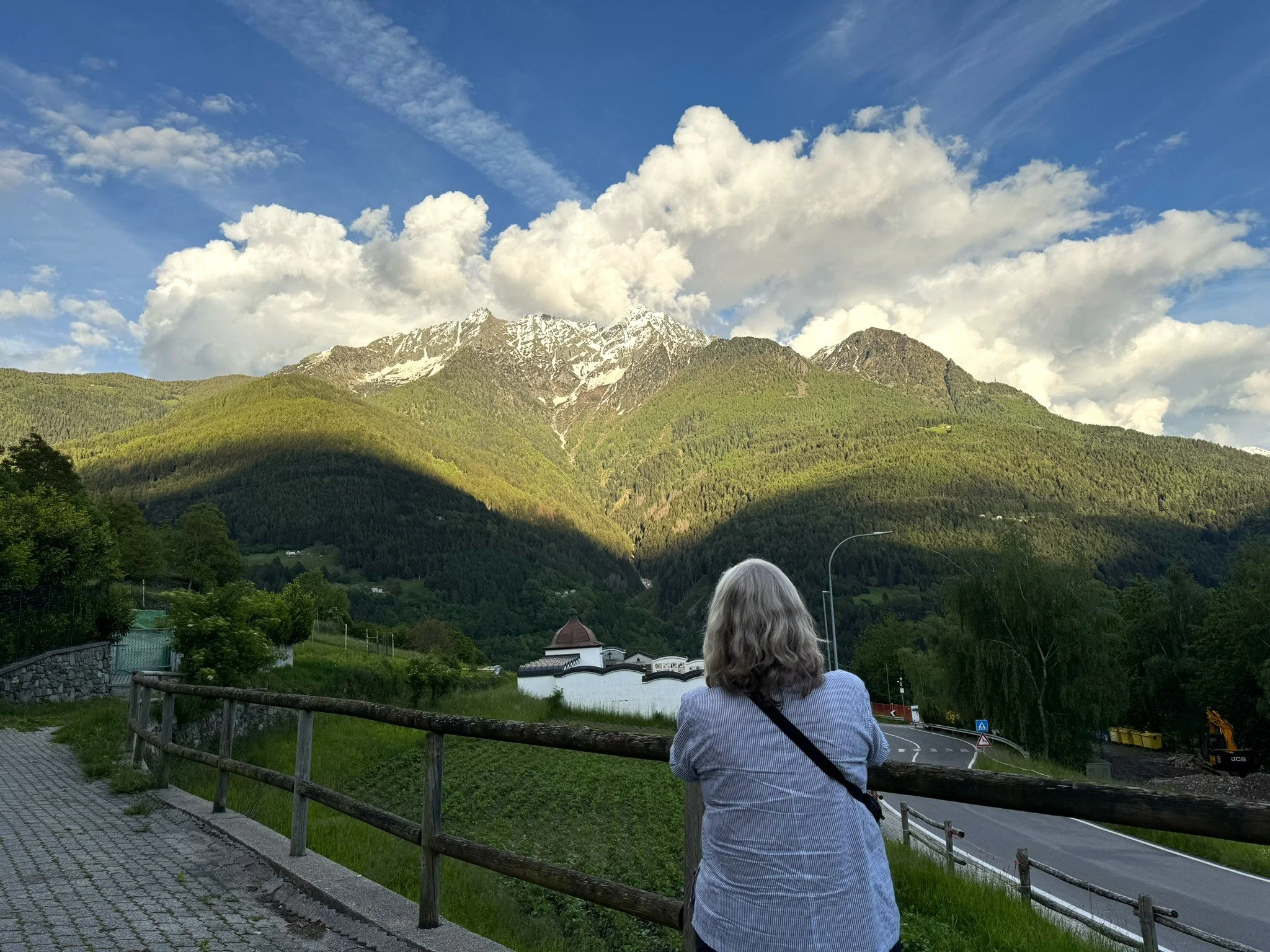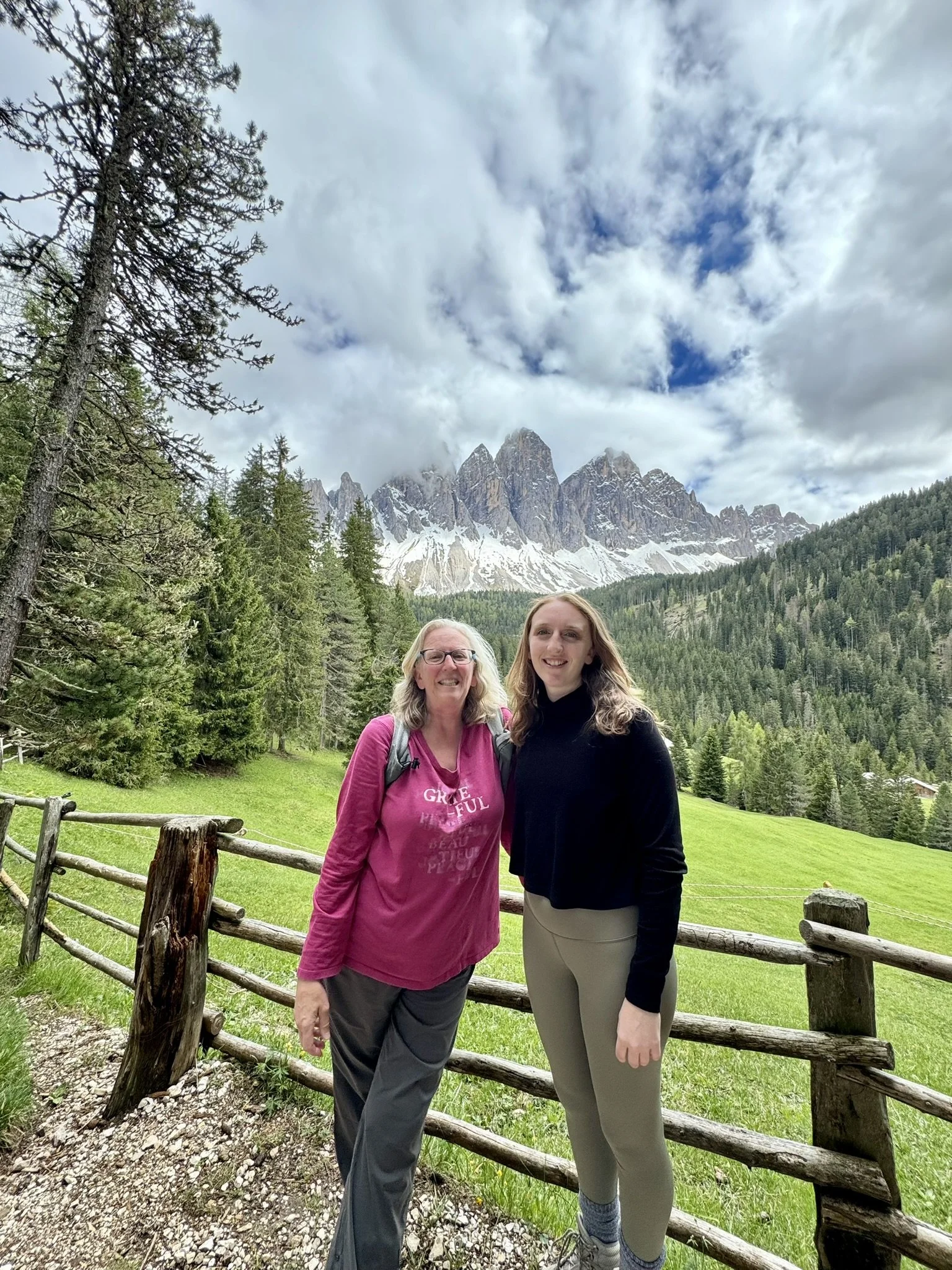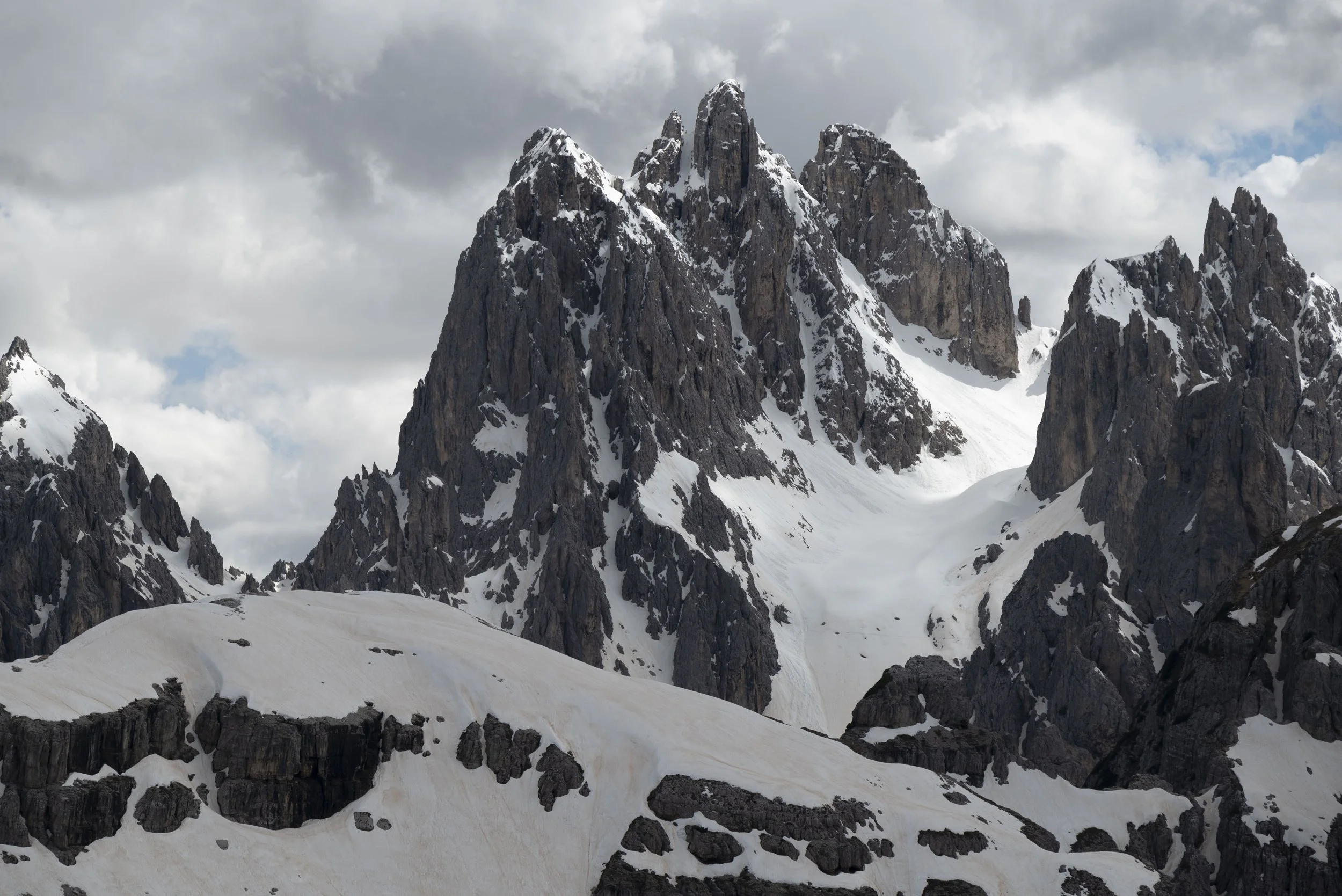
Italian Dolomites Itinerary: 4-Day Mother-Daughter Adventure in the Mountains
The Italian Dolomites stand as one of Europe's most awe-inspiring mountain ranges—a UNESCO World Heritage site where jagged limestone peaks pierce through cotton candy clouds, alpine meadows burst with wildflowers, and charming villages preserve centuries of unique cultural heritage. Join me as I recount my unforgettable 4-day journey with my mom through this breathtaking landscape.
Why Visit the Dolomites?
The Spectacular Geology
What makes the Dolomites uniquely captivating is their distinctive pale limestone formations. During sunrise and sunset, these dramatic towers turn a mesmerizing rosy hue known as "enrosadira" in the local Ladin language. While science attributes this to the high magnesium content in the rock, local legends tell of an ancient king who transformed the mountains pink to console a lovesick princess.
A Cultural Crossroads
The region also boasts a fascinating cultural blend where Italian, German, and ancient Ladin influences converge. Throughout our journey, we encountered trilingual signs and experienced this unique cultural fusion through architecture, cuisine, and local traditions.
Day One: Lake Como to Monno
Our adventure began as we bid farewell to the shimmering waters of Lake Como and embarked on a scenic drive toward the Dolomites. The transition from lakeside elegance to mountain majesty was gradual but breathtaking, with each bend in the road revealing more dramatic landscapes.
The Drive
The journey itself became part of the adventure, winding through northern Italian countryside and gradually climbing into more rugged terrain. We passed through charming villages, alongside rushing alpine streams, and through forests that grew denser as we ascended.
Discovering Monno
After several hours on winding mountain roads, we reached the charming village of Monno—a hidden gem you won't find in most guidebooks. As my mom aptly said, this makes it "even more perfect."
Monno provided our first real taste of the unique architectural style that characterizes this border region:
Traditional stone houses with sturdy foundations designed to withstand mountain winters
Wooden balconies adorned with cascading flowers in vibrant colors
Steep rooflines that prevent heavy snow accumulation
Decorative woodwork showcasing local craftsmanship
Evening Exploration
Wandering through Monno's narrow cobblestone streets unveiled intriguing details at every corner. The sound of church bells resonated through the valley as daylight waned. We stumbled upon a parish church during our exploration, taking time to appreciate its architecture and tranquil surroundings. The combination of Italian and Alpine influences was clear—some buildings showcased classic Italian design, while others reflected unique Alpine features.
Sunset Magic
As the day drew to a close, we witnessed our first Dolomites sunset—the surrounding mountains turning incredible shades of pink in the fading light. Standing there with my mom, watching her take in this sight she'd dreamed about for so long, I understood why these mountains have captured the imagination of travelers for centuries.
Travel Tip: When visiting smaller mountain towns like Monno, evening walks offer not only beautiful photography opportunities but also a chance to see local life unfold as residents return home from work and gather in village centers.
Day Two: Monno to Alpe di Siusi
Morning Departure
Day two began with early morning light just peeking over the mountains as we packed our car for the next leg of our journey. My mom, coffee in hand and buzzing with excitement, was eager to venture deeper into the heart of the Dolomites toward our destination: Alpe di Siusi (Seiser Alm), Europe's largest high-alpine meadow and one of the region's most iconic landscapes.
Scenic Route Discoveries
The drive itself was spectacular, becoming an essential part of our Dolomites experience rather than just transportation between destinations. Every turn revealed another postcard-worthy view, and what should have been a three-hour drive easily stretched to five with our frequent stops.
Travel Tip: When driving through the Dolomites, allow plenty of extra time for spontaneous photo stops! Download offline maps before your trip, as mobile coverage can be spotty in mountainous areas.
As we gained elevation, the distinctive pale limestone formations that make the Dolomites unique began to dominate the landscape. Unlike other mountain ranges formed primarily from dark granite or slate, these towering structures seemed to glow in the sunlight.
Reaching Alpe di Siusi
Important Access Information: Private vehicle access to Alpe di Siusi is strictly regulated to protect its delicate ecosystem. You can only drive up between 5-9 AM and 5-7 PM, and only if you have a reservation at accommodation on the plateau. Otherwise, use the cable car from Siusi or the gondola from Ortisei. Fines for unauthorized driving are substantial.
We carefully timed our arrival to comply with these restrictions, reaching our accommodation near the visitor center by early afternoon. The location was strategically perfect—within walking distance of numerous trails without needing to use our car again until departure.
Afternoon Hike on Europe's Largest Alpine Meadow
After checking in and enjoying a quick lunch of local specialties, we set out to explore the legendary Alpe di Siusi landscape. This vast plateau stretches over 23 square kilometers at approximately 1,800 meters elevation, creating a panoramic wonderland of rolling meadows against a backdrop of dramatic peaks.
The trail system here is exceptionally well-organized:
Color-coded routes for different difficulty levels
Clear distance and time markers at trail intersections
Accurate elevation gain information for planning purposes
Regular benches at scenic viewpoints for resting
We chose the panoramic path that began directly from the visitor center, marked with the standard red and white trail blazes used throughout the Dolomites. The terrain was gentle enough for hikers of varying abilities while still providing spectacular views in every direction.
Flora and Fauna Encounters
As we hiked across the expansive meadows, we were treated to an impressive display of alpine wildflowers—gentians, edelweiss, alpine roses, and countless others created colorful patches across the landscape. These meadows have been carefully maintained for centuries by local farmers who still bring their cattle up here during summer months, creating a perfect example of sustainable coexistence between humans and nature.
Wildlife sightings enhanced our experience, from marmots whistling alerts to each other as we approached to various alpine bird species soaring overhead.
Panoramic Views
As our path gained slight elevation, the iconic peaks of the Dolomites revealed themselves in panoramic splendor. The dramatic Sassolungo Group dominated the view, with the Sella Group and the distant Marmolada glacier completing the breathtaking vista.
What made the experience particularly magical was how the landscape continuously transformed with shifting light. Passing clouds created dramatic shadow patterns across the meadows, while changing angles revealed new perspectives on the surrounding peaks.
Hiking Tip: Even in summer, bring layers when hiking in Alpe di Siusi. At this elevation, weather conditions can change rapidly. Pack a light rain jacket, sunscreen, and plenty of water, as UV exposure remains intense even on cloudy days. A physical trail map is also recommended as backup, despite well-marked paths.
Evening in Ortisei (Urtijëi)
After our hike, we drove down to explore the nearby town of Ortisei in Val Gardena. This picturesque alpine town has been a renowned woodcarving center since the 17th century, evident in the beautiful wooden sculptures throughout its pedestrian center.
Strolling through the central pedestrian zone as twilight settled revealed a town of remarkable charm:
Traditional Tyrolean architecture with elaborately painted facades
Wooden balconies overflowing with colorful flowers
Artisanal shops displaying intricate woodcarvings
Cozy cafés and restaurants offering regional specialties
Missed Opportunity: Seceda
One important recommendation for anyone planning their own Dolomites adventure: try to include Seceda in your itinerary if at all possible. Unfortunately, during our late May visit, the cable car wasn't yet operating for the summer season.
Seceda features some of the most dramatic and instantly recognizable peaks in the entire Dolomites region. The cable car typically runs from late June through October for summer and during winter for skiing. If your timing allows, this is a must-see destination.
Seasonal Planning Tip: If visiting the Dolomites in late May like we did, research which cable cars and lifts will be operational. Many don't begin summer service until mid-to-late June, which can affect access to some spectacular viewpoints.
Day Three: Rainy Morning Explorations to Iconic Viewpoints
Embracing Mountain Weather
We awoke to misty clouds and light rain showers—perfect conditions for experiencing the Dolomites' moody side. While some travelers might feel disappointed by less-than-sunny skies, we quickly discovered that mountains take on a magical quality when partially shrouded in clouds.
The rain brought out rich, earthy colors in the landscape and created a mystical atmosphere as clouds danced between the peaks. An unexpected benefit? We had most viewpoints completely to ourselves, offering a peaceful respite from summer crowds.
Weather Tip: Always keep rain gear and waterproof shoes in your car when exploring the Dolomites. The weather can change hourly, and being prepared means never missing magical moments. Waterproof camera protection is also recommended for photography enthusiasts.
Morning Drive Near Ortisei
Taking advantage of the atmospheric conditions, we embarked on a scenic drive around several viewpoints near Ortisei. The misty landscapes created moody photographic opportunities quite different from the classic postcard images—equally beautiful but more mysterious and evocative.
We stopped at several panoramic pullouts, each offering a unique perspective on the surrounding peaks and valleys. The low-hanging clouds occasionally parted to reveal dramatic rock faces before shrouding them again, creating an ever-changing visual feast.
Puez-Geisler Nature Park
As the weather began clearing mid-morning, we headed to Zanser Alm in Puez-Geisler Nature Park, home to some of the most accessible and rewarding hiking trails in the region.
Hiking Tip: Visitor centers throughout the Dolomites offer excellent resources for hikers, including detailed trail maps, weather forecasts, and information about flora, fauna, and geology. Many also feature educational exhibits that enhance your understanding and appreciation of the region.
The trail network here impressed us with its exceptional maintenance and clear markings. We selected a moderate loop that showcased the valley's highlights without being too strenuous, perfect for appreciating the landscape while conserving energy for the days ahead.
Geological Wonders and Alpine Biodiversity
As we hiked higher, the landscapes became increasingly dramatic—sheer vertical walls of pale limestone seeming to defy gravity. This unique geology creates microclimates that support remarkable biodiversity. My mom, ever the nature enthusiast, delighted in identifying wildflowers throughout our hike:
Gentians: Vibrant blue flowers that thrive in alpine conditions
Edelweiss: The iconic star-shaped white flower of alpine folklore
Alpine roses: Creating bright pink patches across rocky slopes
Saxifrages: Delicate flowers that somehow grow directly from rock crevices
The alpine meadows here host over 1,500 plant species, many endemic to this region and found nowhere else on Earth. Wildlife sightings included several marmots, a chamois on a distant slope, and numerous alpine bird species.
The Perfect Balance
What makes hiking here so special compared to other mountain regions is this perfect balance of accessibility and wilderness. The trails are well-marked and safe, but just a few steps off the main path, and you feel like you're the first person ever to discover these views.
Church of St. John in Ranui
After our hike, we drove to one of the most photographed spots in the entire Dolomites region—the viewpoint overlooking the Church of St. John in Ranui. This tiny white church set against the backdrop of the Geisler/Odle mountain group has become an iconic Dolomites image.
The 18th-century church sits in a perfectly framed clearing with dramatic peaks rising behind it, creating a composition that seems almost too perfect to be natural.
Photography Tip: This spot gets very busy during golden hour, so come early or be prepared to wait. Remember the church is on private property—admire and photograph it only from designated viewing areas, respecting the boundaries that protect this special place. A telephoto lens is useful for capturing detail while maintaining appropriate distance.
St. Magdalena Viewpoint
Just a short drive away lies another legendary vista—the viewpoint overlooking the village of St. Magdalena in the Villnöss Valley. This view is often considered the quintessential Dolomites image, appearing on countless postcards and travel magazines.
What makes this viewpoint special is its accessibility combined with its utterly spectacular panorama. A short, easy walk from the parking area leads through alpine meadows dotted with traditional wooden barns called "stadel," used by local farmers for centuries to store hay and tools.
Then suddenly, the view opens up before you—the tiny cluster of houses and church spires that make up St. Magdalena village, perfectly nestled at the foot of the jagged Geisler/Odle peaks.
Experience Tip: If you visit only one viewpoint in the Dolomites, make it this one. Plan to spend at least 30-45 minutes here, as the view constantly changes with shifting light. Early morning offers the chance of mist in the valley, while late afternoon provides warm, golden light on the peaks.
Evening Transition
After this, we drove to our next accommodation at Almhotel Lenz, positioned perfectly for the adventures planned for day four. The drive itself offered continuous panoramic views as we wound through mountain passes and charming villages.
Checking into our alpine hotel, we were greeted with traditional South Tyrolean hospitality—warm, efficient, and authentically welcoming. Our room featured a balcony overlooking the mountains, providing the perfect setting for reflecting on the day's experiences while planning tomorrow's adventures.
Day Four: Alpine Lakes and Iconic Peaks
Alpine Morning
Day four began with the simple pleasure of waking up to stunning mountain views and watching the first light of dawn transform the limestone peaks with that distinctive pink alpenglow. My mom and I had developed a lovely morning ritual of enjoying coffee on our balcony, planning the day ahead while watching the mountains change colors.
The morning air was crisp and invigorating, carrying the scent of pine forests and alpine flowers. After a hearty breakfast featuring local specialties like homemade bread, mountain cheeses, and speck (smoked ham), we set out for one of the most iconic locations in the eastern Dolomites—Lago di Braies.
Lago di Braies (Pragser Wildsee)
Our first destination was the legendary Lago di Braies, arguably the most photographed lake in the entire Dolomites—and it fully lived up to its reputation despite its popularity.
Visiting Tip: Arrive early! By 9 AM, the parking lot was already filling up. During peak summer months (July-August), vehicle access is restricted once lots are full, requiring visitors to take shuttle buses instead. Consider staying overnight nearby if you want to experience the lake at sunrise when it's at its most serene.
The lake sits at 1,496 meters elevation, surrounded by imposing mountain peaks that create a natural amphitheater. Its distinctive green-blue color derives from minerals in the glacial water and shifts throughout the day depending on light conditions and viewing angle.
The Iconic Wooden Boats
One of the most recognizable features of Lago di Braies is its row of wooden boats lined up along the shoreline—images that have made this lake famous on social media. These traditional handcrafted vessels are available for hourly rental, allowing visitors to experience the lake from a different perspective.
While boat rental was tempting, we opted to experience the lake by walking the full circuit trail instead.
The Lake Circuit
The loop around Lago di Braies extends approximately 3.5 kilometers and takes roughly 90 minutes if you're stopping for photos—which is practically unavoidable given the beauty surrounding you. The path varies considerably around the circumference:
The north shore features easy, flat wooden boardwalks
The eastern side becomes slightly more rugged with rocky sections
The far shore offers more isolated forest paths
The western section returns to developed areas near the boathouse and hotel
Notable Features
Throughout our lake circuit, we discovered numerous memorable spots:
A small chapel on the northwestern shore
Several rocky beaches perfect for dipping tired feet in the (very cold) water
Ancient fallen trees creating natural frames for photos
Mountain streams feeding into the lake with crystal clear water
Quiet forest sections where biodiversity thrives away from the crowds
Lake Tip: Take time to complete the entire loop, as the scenery transforms dramatically throughout the circuit. While crowds concentrate near the boathouse and hotel areas, the far side offers equally beautiful perspectives with significantly fewer visitors. Bring water and snacks, as facilities are limited once you're away from the main area.
Tre Cime di Lavaredo Adventure
After thoroughly exploring Lago di Braies, we headed toward what was supposed to be one of the highlights of our trip—the famous Tre Cime di Lavaredo circuit. This iconic hike loops around three distinctive stone towers that have become symbols of the Dolomites.
Unexpected Route Adjustment
When we arrived, we discovered the road to Rifugio Auronzo (the usual trailhead) was still closed for seasonal maintenance—an important consideration if visiting in late May or early June, as many high-altitude roads remain closed until mid-June depending on snow conditions.
Rather than abandoning our plans, we adapted with a solution that turned into an unexpected adventure. We parked at Chalet Lago Antorno and decided to walk up the closed road to reach the trailhead—a choice made by several other determined visitors as well.
The Scenic Approach
This improvised approach added approximately 7 kilometers with 500 meters of elevation gain to our journey. Without vehicles, the paved road became a peaceful, winding path through increasingly dramatic alpine terrain:
Lower sections featured dense pine forests and bubbling streams
Middle portions opened to reveal the first glimpses of dramatic peaks
Higher sections traversed rocky terrain with expansive views of the valley below
Final approaches offered our first views of the iconic three peaks themselves
The steady climb required effort but provided constant rewards in the form of ever-improving vistas. My mom and I found ourselves enjoying this unexpected detour, having the road entirely to ourselves except for a few other hikers and occasional maintenance vehicles.
Reaching Rifugio Auronzo
After approximately two hours of steady uphill walking, we reached Rifugio Auronzo at 2,320 meters elevation—the traditional starting point for the Tre Cime circuit. Though the rifugio wasn't yet open for the season due to our early June timing, we had come prepared with water and snacks.
From this vantage point at the base of the three towering peaks, the sheer scale of these stone giants became apparent. The distinctive shapes of the three "chimneys" rose dramatically against the blue sky, creating the iconic silhouette known throughout the world.
Partial Circuit Completion
While our extended approach meant we couldn't complete the entire circuit due to time constraints, we were able to walk a significant portion—enough to experience the magnificent up-close perspectives of these geological wonders.
The trail itself was still partially snow-covered in sections, another reminder of our early-season visit. These snow patches created a beautiful contrast against the pale limestone and added another dimension to our photographs.
Seasonal Tip: If visiting outside peak season (July-September), always check road conditions and rifugio opening dates before setting out. While early or late season visits mean fewer crowds, they require more flexibility and preparation. Always carry extra layers, as temperatures drop significantly with elevation gain.
Lago di Misurina
On our drive back toward our accommodation, we made one final stop at the famous viewpoint overlooking Lago di Misurina—often called "the pearl of the Dolomites."
This alpine lake sits at 1,754 meters above sea level, surrounded by some of the most dramatic peaks in the region. Unlike the more intimate Lago di Braies, Misurina offers wide-open panoramas with the lake forming a perfect reflective foreground to the mountain backdrop.
The late afternoon light cast long shadows across the landscape, creating ideal conditions for photography and quiet contemplation. Standing here with my mom, taking in one last breathtaking Dolomites vista, I felt immensely grateful for these shared days of adventure.
Final Evening
From Lago di Misurina, we drove a few more hours to our final accommodation in the Dolomites region. Over dinner featuring regional specialties, we reminisced about our favorite moments from the past four days and began planning our inevitable return to explore more of this magnificent mountain range.
As sunset painted the surrounding peaks in golden light, we realized our mountain journey was coming to an end, but the memories we'd created together would certainly last a lifetime.
Planning Your Own Dolomites Adventure
Best Time to Visit
Summer (Late June-September): Ideal for hiking with lush meadows, comfortable temperatures, and all facilities open
Early October: Fewer crowds and beautiful fall colors as larch trees turn golden
Winter (December-March): Transformed into a winter wonderland with world-class skiing
Late May/Early June: Beautiful spring flowers but expect some high-altitude road and lift closures
Getting Around
Renting a car provides the most flexibility for exploring the region
Be aware of seasonal road closures, especially if visiting in May-early June
Respect ZTL (limited traffic zones) and restrictions in protected areas like Alpe di Siusi
Consider parking and using cable cars/lifts in peak season to avoid congestion
Purchase a good road map as backup to GPS, which can be unreliable in mountain areas
Suggested Itinerary Routes
Northern Circuit: Lake Como → Monno → Alpe di Siusi → Val Gardena → Val di Funes
Eastern Focus: Cortina d'Ampezzo → Tre Cime → Lago di Braies → Misurina
Complete Circuit: Milan → Lake Como → Dolomites (7-10 days recommended)
Must-See Locations
Alpe di Siusi/Seiser Alm (Europe's largest alpine meadow)
St. Magdalena viewpoint in Val di Funes
Lago di Braies/Pragser Wildsee
Tre Cime di Lavaredo circuit
Seceda ridgeline (accessible by cable car from Ortisei)
Passo Gardena viewpoints
Val Gardena villages (Ortisei, Selva, Santa Cristina)
Accommodation Tips
Book accommodations well in advance, especially for July-August
Consider staying at rifugios (mountain huts) for unique experiences
Look for properties with "half-board" options (breakfast and dinner included)
Agriturismos (farm stays) offer authentic cultural experiences
Mountain villages make better bases than larger towns for maximizing scenic value
Practical Tips
Pack layers for variable mountain weather, including waterproof outer layers
Bring quality hiking shoes, even for easy trails
Consider staying in different locations throughout your trip to minimize driving time
Learn a few basic phrases in Italian and German
Carry cash for mountain huts (rifugios) that may not accept cards
Purchase a detailed hiking map for each region you plan to explore
Download offline maps before losing cell service in mountain areas
Consider a telephoto lens if you're interested in photography
Cultural Insights
Embrace the unique trilingual culture (Italian, German, Ladin)
Try regional specialties like canederli (bread dumplings), speck (smoked ham), and local cheeses
Visit woodcarving workshops in Val Gardena to see traditional craftsmanship
Respect agricultural traditions—close gates behind you when crossing pastures
Learn about the region's complex history and how it shaped local identity
Have you visited the Dolomites or are you planning a trip? Share your experiences or questions in the comments below!
For more travel inspiration and detailed guides, subscribe to my YouTube channel, The Scenic Route Traveler, where I discover breathtaking landscapes one scenic route at a time.
Video Resources
Watch the full video of our Dolomites adventure HERE
Join our community:
📸 Instagram: @erinparro_travel
🎥 TikTok: @erinparrotravel
📌 Pinterest: @erinparro
